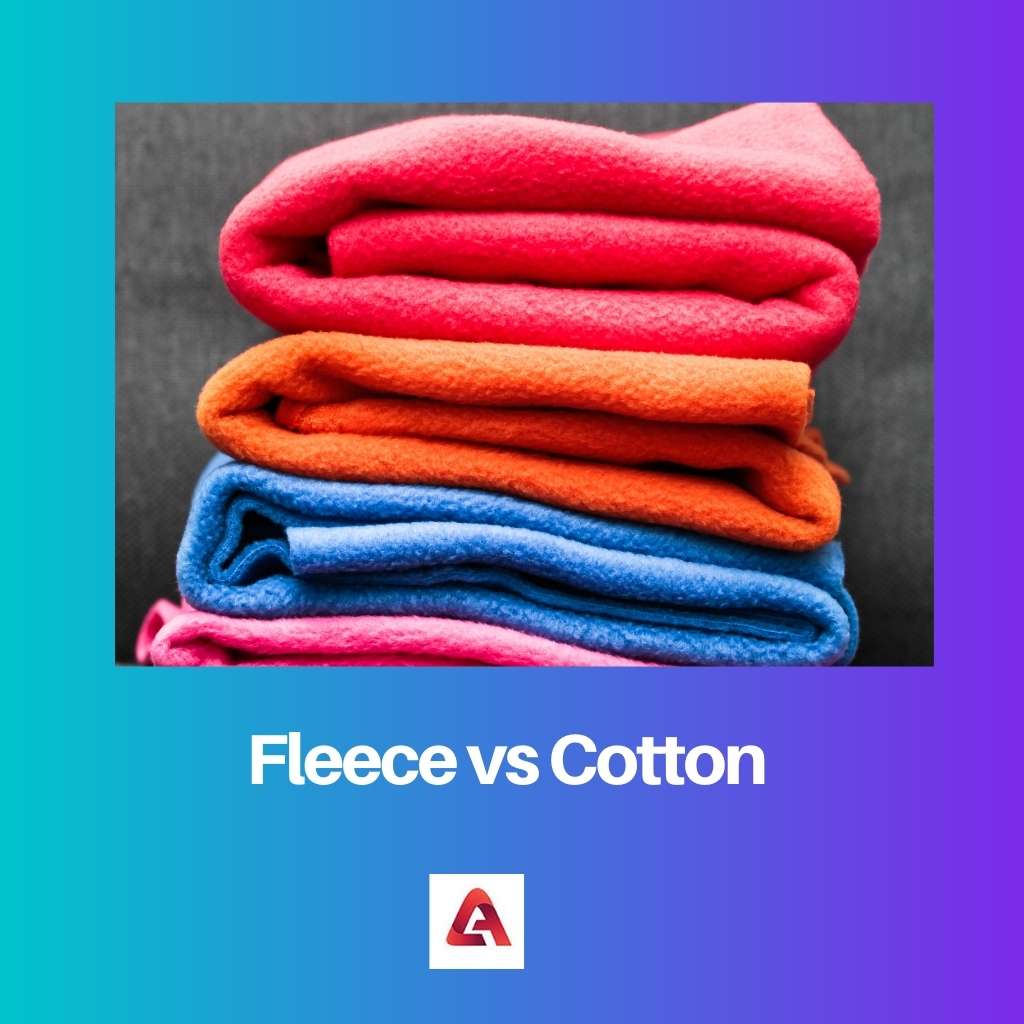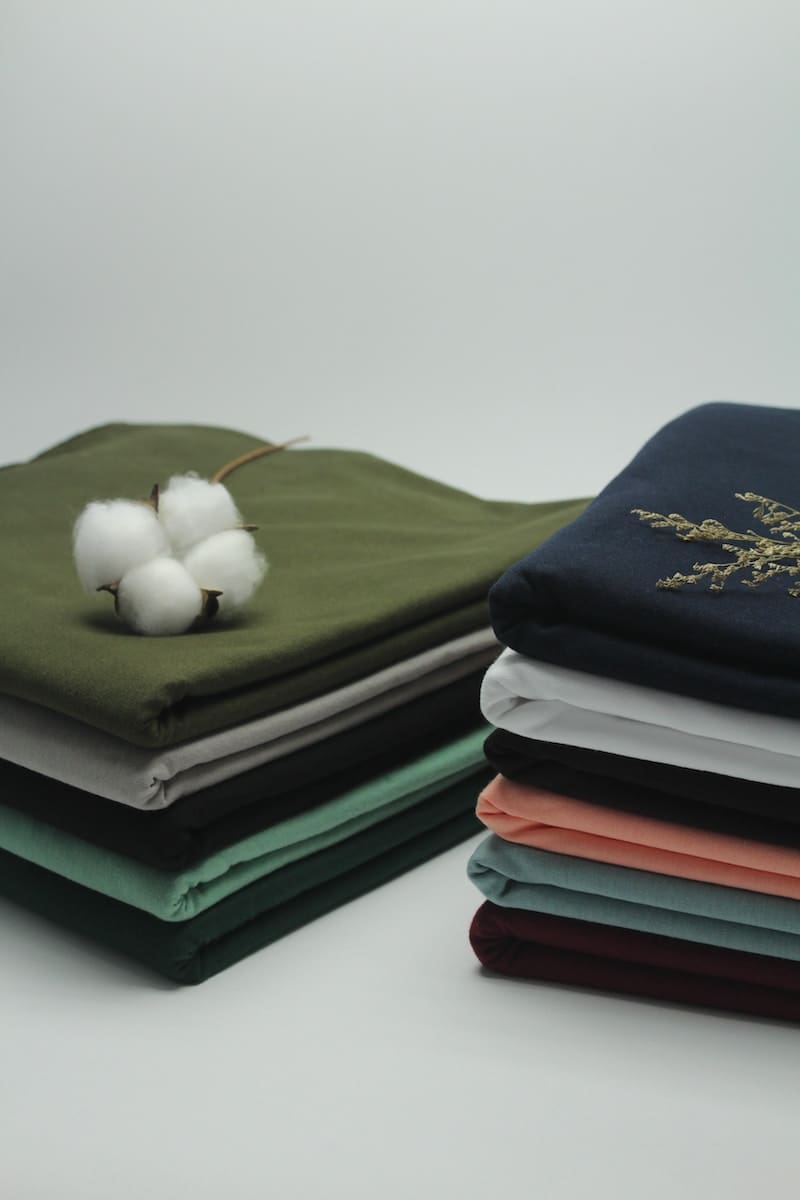The fashion industry has gone above and beyond and provided us with profuse options to choose from in terms of fabric. It has heard our concerns and produced several fabrics with various textures and materials.
According to our preference, we may choose from these fabrics. Two of the most popular and widely used fabrics are cotton and fleece.
Key Takeaways
- Fleece is a synthetic polyester fabric known for its warmth and lightweight feel, while cotton is a natural fiber with a soft, breathable texture.
- Fleece provides excellent insulation and moisture-wicking properties, making it ideal for activewear and cold-weather clothing, whereas cotton is more suitable for every day and warm-weather garments.
- Cotton is more environmentally friendly than fleece, as it is biodegradable and renewable, while fleece production relies on petroleum-based materials and can release microplastics during washing.
Fleece vs Cotton
Fleece is a synthetic fabric made of polyester that is lightweight. A Fleece is soft and warm, used in jackets and blankets. Cotton is a natural fiber derived from cotton plants, and is soft, and absorbent. Cotton is also breathable, durable, and commonly used in clothing and home textiles.

Fleece is a fabric ideal for colder weather. It is generated from synthetic factors and was manufactured to replicate wool. It has outstanding durability and can be tested in rough and harsh climates.
Cotton is a fabric that is ideal for warm weather. It is an all-natural fabric and is completely bio-degradable. The unique selling point of cotton is its breathability and the comfort it provides.
Comparison Table
| Parameter of Comparison | Fleece | Cotton |
|---|---|---|
| Origin | Plastic, chemicals, and petroleum products | Cotton plant |
| Fibers used | Polyester fibers | Cotton fibers |
| Texture and Quality | Artificial and smooth | Soft and smooth |
| Comfort and warmth provided | Warm fabric as it replicates wool. Not as comfortable as it replicates the wool texture. | Does not provide much warmth but very comfortable fabric |
| Breathability | Less breathable fabric | Very breathable fabric |
| Dry time | Dries faster | Takes time |
| Moisture | Take away moisture and dries faster | Soaks in moisture and stays damp |
| Odor resistant | Maintains foul odor | Does not maintain any foul odor |
| Durability | It is even more durable than cotton | Very durable |
| Biodegradability | Takes time | Biodegradable in nature |
What is Fleece?
Fleece is material was created during the 1970s and the reason for its creation was to impersonate wool. For that reason, it is a warm texture when winter and pre-winter come.
This texture is regularly seen as eco-friendly as it is produced from reused plastic or recently made wool materials. Fleece originally is produced using polyester fibers.
These fibers are produced using plastics, chemicals, and petroleum products. Fleece is the synthetic alternative to natural wool. It shares numerous likenesses to it, yet it likewise contrasts broadly.
Fleece arrives in various thicknesses and types, some of which are fluffy, though others are more hearty and harsher. Regardless of this, fleece has one trademark that is divided between its sorts as a whole: its delicate quality.
Ordinarily, fleece is utilized for its capacity to give protection, that is, to trap hotness and keep one warm.
Regardless, its low water absorption capacity and high sturdiness are two different characteristics that make it an exceptionally liked and adaptable material to utilize.
With dampness-safe properties, fleece is great to use for athletic exercises where one wants to remain drier. It is additionally a light texture that is not difficult to wear and will not burden or feel heavy upon wearing.

What is Cotton?
In 1730 machine spinning began, after which in the year 1793 Eli Whitney made a cotton gin that was revolutionized. It birthed the used cotton in clothing and other fabric items. Being plant-based fiber cotton is all-natural.
Cotton being breathable and admirably solid, cotton is likewise hypoallergenic, a property that isn’t excessively normal in materials.
Cotton is a fabric that is most appropriate for milder conditions, ideally dry ones as it ingests water to a degree that would present genuine dangers in some unacceptable climates.
Cotton is also extremely delicate and doesn’t aggravate the skin either, which is the reason cotton masks, buds, and cotton pads are produced using it.
Cotton also does not retain any foul odor proving to be the suitable fabric for warmer weather.

Main Differences Between Fleece and Cotton
- Fleece is produced using cotton; it is normally produced using plastic, chemicals, or other manufacturing products. Whereas cotton is produced from the cotton plant itself.
- The fibers used in fleece are polyester fibers while; the fibers used in cotton are cotton fibers.
- Fleece is a warmer fabric in comparison to cotton. Cotton is suitable for warmer weather however fleece is suitable for colder weather as it replicates wool. Cotton is known for its comfortable and breathable fabric whereas fleece is known to have coarse threads which can feel itchy against one’s body.
- Fleece has a more artificial texture to itself as it is manufactured from polyester fibers whereas the USP of cotton is its soft and smooth fabric.
- Cotton is a very breathable fabric and is known to provide comfort in warmer months due to this feature; however, fleece is not a breathable fabric like cotton.
- Fleece is a material that dries faster whereas cotton as a fabric takes take to dry.
- Cotton is a very durable fabric. Fleece, as it is produced from synthetic materials and polyester fibers it is very durable. It is more durable than cotton.
- Cotton as it is produced from cotton fibers is completely biodegradable. Fleece on the other hand as it is produced from synthetic fibers takes time to degrade completely. Although fleece is seen as eco-friendly material as it tends to be made from reused plastic or recently made fleece materials.

- https://www.sciencedirect.com/science/article/pii/S0074769608613005
- https://www.jstor.org/stable/24979302
